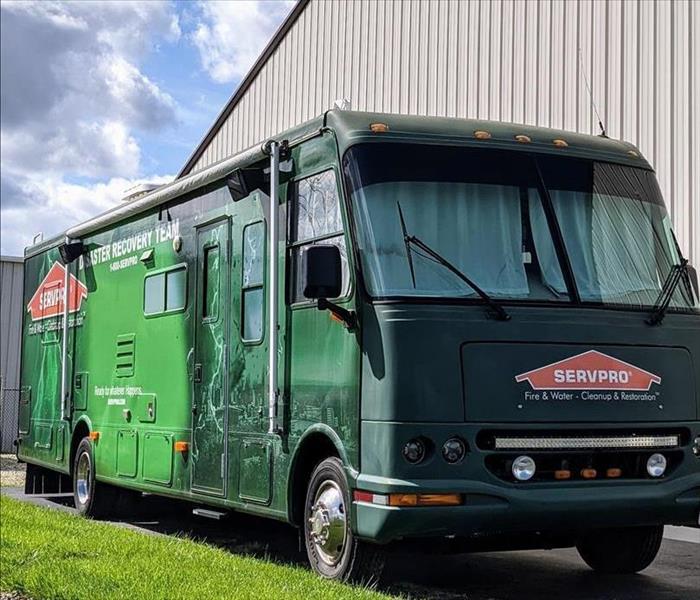Stop, Drop, and Read, Before You Fire Up Your RV
4/14/2021 (Permalink)
The weather is warming up, and; you know what that means, it’s time to start camping again! Is your Recreational Vehicle ready? According to the National Park Service, 20,000 RV fires occur nationally each year. Before you hitch up those RVs, pack up those tents, and head for the trees, make sure you’re prepared for fire safety.
Before You Hit the Road
Make a checklist before you leave to make sure that you are ready for any emergency. You can use our list or; make your own.
- Make sure the smoke detector is working.
- Make sure you have a Fire Extinguisher that puts out class A, B,& C fires. You can have it inspected to ensure it’s in working order.
- Examine your appliances that use propane for leaks.
- Refridgerator
- Furnace
- Stovetop
- Oven
- Check that your propane leak detector is working.
- Know your emergency exits.
- Make sure your emergency exits are clear.
- Make sure your emergency exits are not stuck.
- Make sure your family has and knows the emergency plan.
- Inspect your power cords for wear and tear. Replace any power cords that are damaged or old.
- Identify any attachments or chains that could drag to the ground while you are driving. The sparks could ignite and start a fire or an explosion if it reaches the propane.
- Unrelated to fire but just as important:
- Make sure your Carbon monoxide detector is in working order.
- Have an emergency communication device on hand.
Relax but Stay Safe
On warm sunny days, it’s tempting to lounge outside while your meal slowly simmers on the stove inside. Statistically, most fires that happen in an RV start in the kitchen. Stay inside and keep an eye on the cooking meal. Clear the stove of anything that could catch fire.
When your cooking with a gas stove, sometimes a pot will boil over and put out the flame. Even though the flame on the stove is out, gas will continue to flow. This makes the air combustible. Before attempting to relight the pilot light turn off the stove. Then, open all of the doors and windows to air out the RV. After you’ve given it a few minutes, it should be safe to ignite the pilot light again.
Keep your campfire at least 25 feet away from any and all structures. This includes your RV, tents, and additional vehicles you may have on your campsite. Before turning in for the night, make sure the fire is completely out. Even if it’s just embers, a fire that remains lit has the potential to turn into a wildfire.
In Case of An Emergency
In case of emergency, the first thing you should do is get out. The RV and the contents inside can be replaced life, cannot. Do not go back inside for any item. The only time you should attempt to put out the fire yourself is if you know you can do so without endangering yourself.
When your out in the woods, cellphone service can be spotty or non-existent. Plan ahead for this. Make sure that you have some form of emergency communication so you can contact the fire department or a park ranger. Here are some options that you can add to your packing list.
- HAM radio
- CB radios
- Satellite phone
You can also check out the apps listed below. They can be used when there is no cell service available.
If a fire does break out, SERVPRO can help you handle the aftermath. Our professionals are trained to clean smoke and soot out of any structure, including your RV. We can also clean your contents that were affected by the fire.
We hope this checklist keeps you safe in case of an emergency. Most of all, we hope that you have a fun and relaxing time with your family and friends during this camping season.

 24/7 Emergency Service
24/7 Emergency Service
